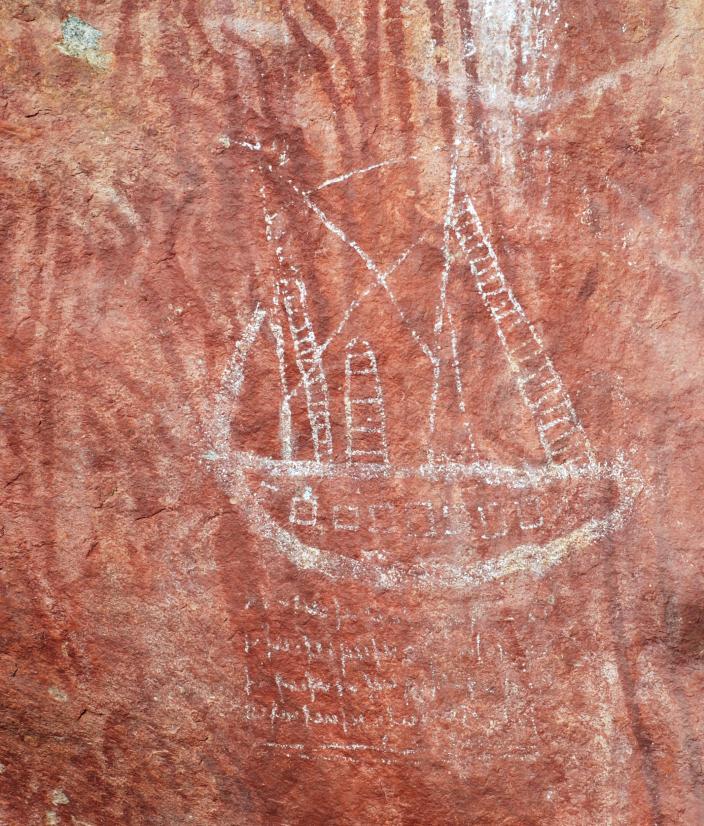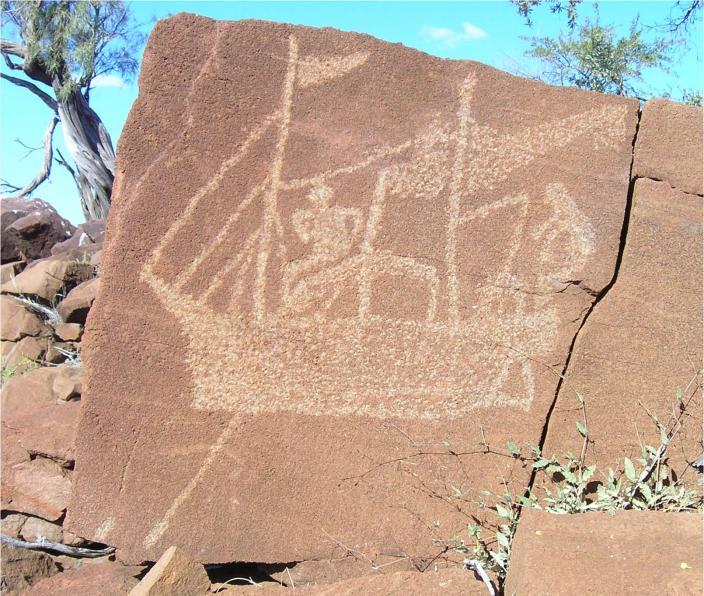
Set in Stone
Images of SS Xantho
Among all the images on rocks in remote WA is the painting of a two-masted steamship, at Walga Rock, near Meekatharra. In determining how a ship came to be depicted so far inland, mid-west historian Stan Gratte has traced the painting to 1917, the same year a man known as Sammy ‘Malay’ left Dirk Hartog Island to join the Aboriginal group at Walga Rock. Sammy was one of many ‘Malays’ who, after becoming unemployed in the pearling industry was abandoned by his employer. It is understood that Sammy is responsible for the image.
Petroglyphs, that is, images pecked into stone, occur all across the northwest of WA. It is an artform found in many locations but is particularly notable in Western Australia because of the depictions of animals which are now extinct in some of these regions. Three Aboriginal depictions at Indanoona Station east of Cossack show a two-masted steamship, with smoke billowing from the tall funnel. In one case there appears to be an anchor cable, a figure seated on the boiler casing above the deck, and what appears to be an animal being hoisted on the mizzen gaff, its fore and hind legs tucked in as it is hoisted clear. The animal is believed to be a sheep.

Walga Ship Drawing
Credit: WA Museum

Rock art at Indernoona, believed to show SS Xantho
Credit: A. Paterson

Rock Drawings of Xantho
Credit: WA Museum